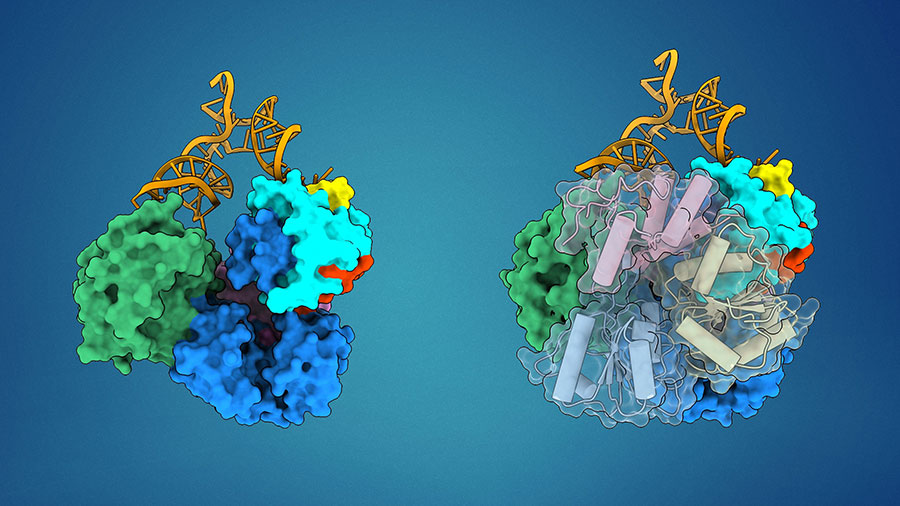Rhythms behind zigzag hair growth, capturing atomic picture of dengue virus replication, parasitic worms manipulate the host mantis, organ preservation and human hibernation, and more.
Research highlights articles and press releases between May 2023 to November 2023. Read these and other articles on the BDR website.
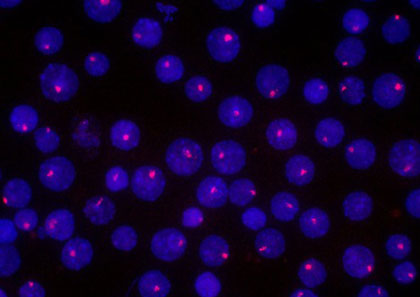
Dissecting the structural secrets of the inactive X chromosome
Nov 13, 2023
One of the two X chromosomes carried by female cells is inactivated early in embryogenesis, becoming an inactive X chromosome and suppressing gene expression. Rawin Poonperm,
Ichiro Hiratani and others in the Lab for Developmental Epigenetics have analyzed the regulation of DNA replication timing of the inactive X chromosome in mammalian females and uncovered new features regarding its three-dimensional structure. Their findings are expected to lead to a better understanding of how the highly condensed chromosome structure, called heterochromatin, stably represses gene expression.
MorePoonperm R, Ichihara S, Miura H, et al. Nat Struct Mol Biol 30, 1224-1237 (2023)
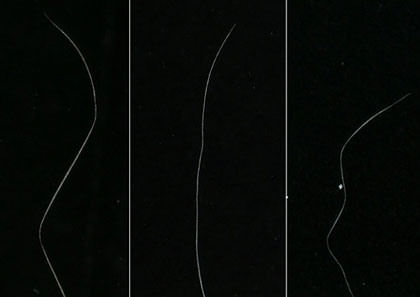
Unlocking the rhythms behind the growth of zigzag hair
Nov 10, 2023
A team led by
Takashi Tsuji of the Lab for Organ Regeneration has been investigating the molecular mechanisms responsible for the distinctive bending pattern observed in ‘zigzag hairs’ found in the underfur of mice. They found that these hairs develop kinks every three days during the follicle maturation process and uncovered a molecular rhythm responsible for this phenomenon. These findings could pave the way for novel anti-aging solutions in humans.
MoreTakeo M, Toyoshima K, Fujimoto R, et al. Nat Commun 14, 4478 (2023)
Uncovering the cell’s read–write mechanism for gene expression instructions
Nov 7, 2023
Takashi Umehara and team at the RIKEN BDR reveal the ‘read-write’ mechanism guiding gene expression in cells. They discover that besides transcription factors, chemical modifications to histone proteins also influence gene expression quality and quantity. The study focuses on the p300/CBP enzyme and its role in histone acetylation. They found that p300/CBP recognizes specific acetylation marks on histone H3-H4, replicates these acetylation marks to unacetylated sites, and also transcribes them to histone H2B-H2A within the same nucleosome, ultimately influencing gene transcription. This sheds light on how epigenetic information is inherited and utilized for gene expression. The team plans to explore these mechanisms next in non-animal species.
More
Kikuchi M, Morita S, Wakamori M, et al. Nat Commun 14, 4103 (2023)
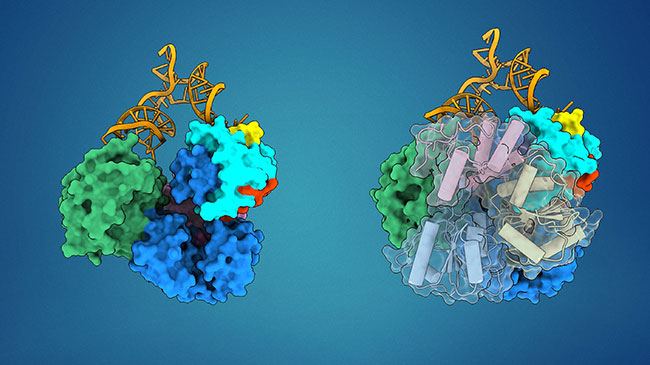
Atomic picture of dengue replication could transform antiviral approaches
Oct 31, 2023
Using cryo-electron microscopy,
Shun-ichi Sekine and his colleagues in the Lab for Transcription Structural Biology unveil three-dimensional images detailing how key viral proteins of the dengue virus interact with RNA at various stages during viral replication. This atomic exploration sheds light on the part of the mechanism by which the virus propagates in infected cells, including the suppression of immune responses. These finding could pave the way for development of more effective antiviral drugs against dengue and related flaviviruses.
MoreOsawa T, Aoki M, Ehara H, Sekine S. Mol Cell 83, 2781-2791 (2023)
Signaling molecule from cancer cells induces metabolic changes to fruit-fly larvae
Oct 25, 2023
Morihiro Okada,
Sa Kan Yoo and co-workers in the Lab for Homeodynamics have discovered that cancer-induced stress in fruit-fly larvae produces a protein known as Netrin, which reprograms the metabolism of the larvae. This is the first time that Netrin, also known to guide cell migration during development, has been implicated in spreading the effects of cancer systemically. Inhibiting Netrin expression increased larvae survival rates, suggesting potential new ways to treat for cancer-induced complications in humans. The team plans to extend their investigation to mice next.
MoreOkada M, Takano T, Ikegawa Y, et al. EMBO J 42, e111383 (2023)
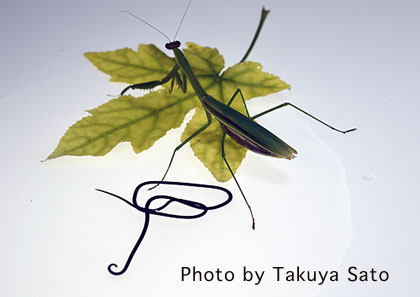
Stolen genes allow parasitic control of behavior
Oct 20, 2023
A team led by Tappei Mishina in the
Lab for Chromosome Segregation has discovered that a parasite, horsehair worm, can manipulate the behavior of their mantis host using stolen genes that they likely acquired through a phenomenon called horizontal gene transfer allowing them to complete its reproductive life cycle.
MoreMishina T, Chiu MC, Hashiguchi Y, et al. Curr Biol 33, 4988-4994 (2023)
How a widely used antimalarial drug affects zinc levels in a malarial parasite
Sep 7, 2023
Akira Wada and his co-workers at the RIKEN BDR uncover the crucial role of zinc depletion in the action of the antimalarial drug dihydroartemisinin (DHA) against the parasite,
Plasmodium falciparum. DHA was found to induce pyknosis, a state of developmental arrest, in red blood cells, reduce glutathione concentration and disrupt zinc homeostasis leading to a synergistic inhibition of parasite growth. These findings offer insights for developing new antimalarial drugs to combat drug-resistant strains.
MoreAsahi H, Niikura M, Inoue S, et al. ACS Infect Dis 9, 1303-1309 (2023)
Towards organ preservation: Animal resistance to cold reflected in stem cells
Aug 18, 2023
Researchers led by
Genshiro Sunagawa in the Lab for Hibernation Biology have shown that an animal’s stem cells possess the same level of cold resistance as the animal itself. Examining mice with different hibernation-like characteristics, they show that those with the best resistance to cold temperatures have stem cells that generate energy differently than others. Beyond these immediate findings, the study establishes mouse stem cells as a practical model system for further research into organ preservation and even human hibernation.
MoreSuita K, Ishikawa K, Kaneko M, et al. Cell Rep 42, 112954 (2023)
How a gut microbe causes flies to live fast and die young
Jul 28, 2023
Fumiaki Obata and his co-workers in the Lab for Nutritional Biology reveal how
Acetobacter persici, a gut bacterium, shortens the lifespan of fruit flies. A component in the bacterium’s cell wall triggers a receptor in the fly’s gut, enhancing immunity and causing early death. This ‘live fast, die young’ tradeoff raises possibilities for health-beneficial ‘postbiotics.’ Future research will explore the involved genes and potential applicability to other animals.
More
Onuma T, Yamauchi T, Kosakamoto H, et al. PLoS Genet 19, e1010709 (2023)

Flies aren’t freaks when it comes to cell death
May 8, 2023
Sa Kan Yoo and Yuko Ikegawa in the Lab for Homeodynamics make a surprising discovery of a BH3-only protein that they named
sayonara in fruit flies, challenging the notion that fruit flies and possibly all insects lack such proteins. Activating the
sayonara gene induced apoptosis, revealing a previously overlooked mechanism for cell death regulation in fruit flies. The finding suggests commonalities with humans and nematodes, prompting further exploration of the effects of activated BH3-only protein and its presence in other insects.
More
Ikegawa Y, Combet C, Groussin M, et al. EMBO J 42, e110454 (2023)





